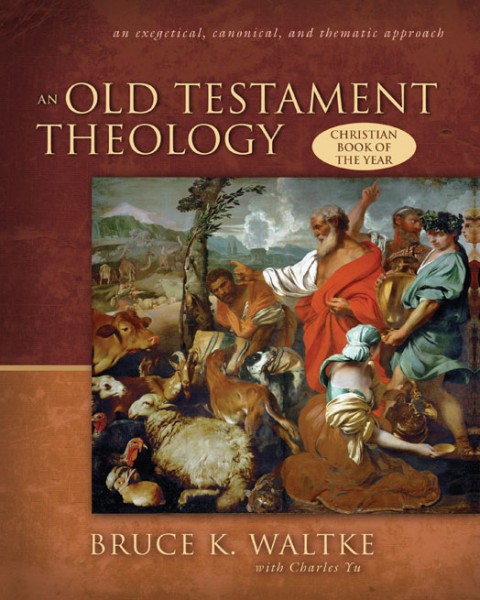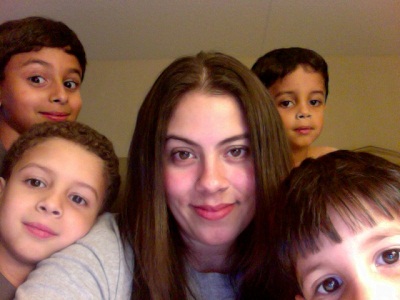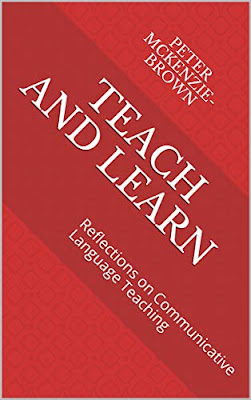There are many ways to give the gift of the written word. It is a nice gesture for any occasion- a birthday, Christmas, or even an anniversary. And, presenting a present that you have put so much thought and effort into will surely touch the heart of the recipient.
Create a Collection of Quotes and Memories from Friends
This project will certainly turn into a memoir that will be loved and cherished. To put this together, you will need to recruit a little help. Have all types of people who know the recipient write down something about the person, or a memory they have of them.
It is a good idea to provide paper to the writers, as you will want the look of the quotes and memories to appear uniform. You may even want to provide a special type or color of ink to be used. Once you have collected these statements, put them decoratively into a scrapbook. Be as creative as you want to be. You may even want to choose a theme for the book- perhaps a hobby or destination the recipient loves.
Alternately, you may want to have the quotes and memories published in a real book. Doing a search in your favorite search engine will likely uncover several publishing companies that fill orders for individual books. This option is good if you have extra money to put into the gift and/or you are not up to being particularly creative.
Writing an Acrostic Poem
Writing an acrostic poem about a loved one is also a fun and inventive gift idea. Acrostic poems are poems that use a base word to create several descriptive words about the subject. Basically, what you will need to do is write the recipient’s name down a sheet of paper, making sure that each letter has its own line. You will now need to think of an adjective that starts with each letter that describes the person you are writing about.
Once you have the poem written and polished, you may want to write it out in a computer program. Any word processing program will be fine for publishing your poem in a polished way. A more elaborate publishing program can add some color and style, if you have access to one. Once you have the poem the way you want it, you can print it out. It will them be ready to frame.
Creating either one of these gift ideas will really get you thinking about the recipient. Spending time on a gift this way can cause you to remember what you value about the person. And, those sentiments and the care you put into it will shine through in the finished product. It will be a gift you both will admire.

[Scripture] is God’s word to the church…not merely a historical artifact of Israel’s religion. In the Bible’s pages, the church learns what to proclaim and how to live as a kingdom of priests, a holy people, and a light to the nations–to act justly, love mercy, and walk circumspectly. The church learns how to worship, pray, adore God, and confess sin.
The theologian should consider the Bible’s Source as inerrant and its teaching as infallible; should study the text for meaning rather than just as an account of the events recorded therein; should read the Old Testament as a unity, a product of the one Author; should read reverently, recognizing the authority of the text for the present day.”
Bruce K. Waltke, An Old Testament Theology

The theme for Blogust is “Comments Count”, each blogger will write about someone online that has inspired them through comments and support.
When thinking about someone online that inspires me, I was immediately taken back five years to when I had the misfortune of experiencing a very preventable c-section. I remember feeling broken and disappointed that I had gone against my better judgment. Not disappointed in the beautiful gift I had received in my son but that I had experienced such a traumatic delivery unnecessarily. I was showered with a number of comments on my “Delivery post”, all of them encouraging and sympathetic. One comment in particular stood out from the rest, it was from a friend named Carrie, who is no longer online. Her words to me that day were life giving, it was as if she had been sent to lift me out of my funk. One comment, a comment that I printed out, that I go back to often, that I cherish to this day.
Read More >>
One of the greatest gifts that a parent can bestow on their children is a love of reading. How much your child enjoys reading will affect their entire life. If your child associates reading with struggling and not really understanding what is being read – that attitude will color his or her school work and professional world all their lives.
Start Early
You can make reading a little easier by making it an enjoyable experience for your kids. First of all, start reading to your children when they are very young. You may not think that baby on the bouncy chair is actually listening to a word that you are reading, but in fact the baby is learning to listen to your voice and as he grows older he will look forward to the stories that you read.
Make a Time and Place
Make time to read with your child. If he goes and gets a book, if it is at all possible, put off whatever you’re doing and make some time to read. If you need to finish something – do so but then read to your child. It only takes a little time and you’re building a love of reading in the future. Additionally, give you child someplace to read. Whether it is in a cozy chair by a window or a area rug of their own to lay on and look at a book; make it a comfortable experience and you will teach your children a valuable relaxation technique of winding down through reading.
Use these tips to foster a love of reading in your children and they will reap the rewards throughout their lives.
- book displays
- bookcase
- early readers
- rugs
Articles written by SensoryEdge are a combined effort of the SensoryEdge publishing staff. At SensoryEdge our focus is to educate, inform, and inspire each person caring for children to be and do their very best. It is not always easy and sometimes we don’t take action (or we take the wrong action) because of a lack of understanding the real issues. We hope that the conversations that occur here will help in some small way better the lives of children, their families, and the professionals who work with them.
We are always looking for valuable contributions to our site so if you are interested in becoming a contributor contact us at
I recently updated my book, Teach and Learn: Reflections on Communicative Language Teaching,
and made it available on Kindle and as an inexpensive paperback. To enjoy a
read, please click here.
By Peter McKenzie-Brown
In the beginning, there were only two language skills: listening and speaking. Language began as an aural/oral process. It has always been associated with visual cues, however (consider the pervasive importance of body language in human encounters}, and those visual cues eventually led to the language skills of reading and writing.
In the West, that process began in ancient Sumer, about 3500 BCE. Oddly enough, reading, writing and arithmetic developed out of early accounting systems, rather than the other way around. Reading and writing extended language in quite an extraordinary way. From a function restricted to ear and mouth, they turned it into one that can also be conveyed by eye and hand.
The gradual development of widespread literacy led to many changes in the human condition. Most notably, it liberated language from the immediacy of the spoken word. Both reading and writing require more time than the aural-oral skills, and they tend to encourage thought. The following lists compare spoken and written language, with item #1 in the first group mirroring item #1 in the second group, and so on.
Listening and Speaking
1. Listening and speaking involve impromptu, informal, colloquial language.
2. Unfamiliar national and regional accents and pronunciation problems cause difficulties in comprehension.
3. Meaning is conveyed by word stress, intonation and body language.
4. Gestures and expressions aid understanding.
5. Speakers speak in real time; listeners participate immediately.
6. People easily develop native-language listening and speaking skills.
7. Speech is essentially impermanent.
Reading and Writing
1. Reading texts tend to be organized, formal and stylized.
2. Alphabets and ideographic-style writing systems (think Chinese writing) vary greatly in complexity and approach.
3. English orthography (spelling) is highly idiosyncratic.
4. Meaning is enhanced through punctuation and writing style.
5. Writers have time for corrections; readers can puzzle out meaning.
6. Learning to read and write requires conscious effort.
7. The printed word is documentation.
To read and write, we need six things. In the balance of this commentary, I will review them, and consider their implications for the English teacher.
The Roman Alphabet: English-language learners need to recognize the letters of the Roman (also called the Latin) alphabet. It is very difficult to understate the impact of this hoary old alphabet on western civilization. According to some theorists, this alphabet uses so few letters to represent words that it helped Westerners become highly analytical, and thus had a huge impact on the western mind and outlook.
The Roman alphabet is the dominant writing system in most of the world. The primary alternatives are the Cyrillic alphabet (used in the former Soviet Union), the Arabic alphabet, the Brahmic alphabets of India and parts of Southeast Asia, and the ideographic systems of China, Korea and Japan. The latter are not alphabets.
Phonics: Also known as the phonetic method, this is a system of teaching children to read. It is commonly used to teach young learners to read in their mother tongue. In this system learners are taught the sounds which the letters represent, and then try to build up the sound of a new or unfamiliar word by saying it one sound at a time.
Phonics can be used for older learners that use either ideographic or non-Latin alphabets. The main difference is that older learners have probably already learned their own writing system, so they will bring to the learning process strategies based on that experience. A useful embellishment on phonics is to have the students spell words out loud as they encounter them in writing. Thus, “ant” is “ay en tee.” This helps develop the students’ ability to remember and recognize the word.
Handwriting and Keyboards: Remember that the printed word is essentially speech produced through our hands. Until recently, the normal progression of things was that we would first learn to write, then move on to cursive writing (rounded script). In recent years, however, cursive has been given short shrift in the West, as youngsters increasingly used keyboards.
Does this matter? According to one observer,
The loss of handwriting … may be a cognitive opportunity missed. The neurological process that directs thought, through fingers, into written symbols is a highly sophisticated one. Several academic studies have found that good handwriting skills at a young age can help children express their thoughts better
Whatever the case, most teachers in Western countries do not spend a great deal of time on cursive writing. EFL teachers are less likely to spend time with their students working on it, except in unusual circumstances. In most cases, to be able to print in English is enough.
It is essential that English-language learners acquire as soon as possible the ability to recognize and produce written words. And since the computer is not going to go away, it is often useful (it depends on class assessment and the nature of the assignment) to insist on typewritten work.
Orthography: Orthography is the fancy work for spelling, and English spelling is more irregular than any other on the planet. As the table below illustrates, the letter combination “ou” can be pronounced in eleven ways, while we can create the “long e” sound with eleven different spellings.
Letters “ou”
tough, tour, dough, famous, bought, you, should,
journey, loud, flour, cough.
Sound “ee”
paediatric, me, seat, seem, ceiling, people, chimney,
machine, siege, phoenix, lazy.
When you teach vocabulary, it is critical that you point out irregular spellings. Because of the oddities of accepted English spelling (think “straight” and “protégé”), it is often quite difficult for students – especially those who speak non-European languages – to develop quick word recognition. This requires frequent practice. However, as the following passage illustrates, native speakers with sophisticated language skills can recognize words with great efficiency.
The phaomnneil pweor of the hmuan mnid
Aoccdrnig to rsreeach at Cmabrigde Uinervtisy, it deosn’t mttaer in waht oredr the ltteers in a wrod are, the olny iprmoetnt tihng is taht the frist and lsat ltteer be at the rghit pclae. The rset can be a total mses and you can sitll raed it wouthit porbelm. Tihs is bcuseae the huamn mnid deos not raed ervey lteter by istlef, but the wrod as a wlohe. Asbouellty amzanig huh?
Punctuation: What stress and pronunciation do to the melody and rhythm of speech, punctuation does for the written word. Punctuation skills are to reading and writing what phonology is to listening and speaking.
English punctuation is highly sophisticated, and it is difficult to teach. However, consistently and from the beginning you should stress the basics: capitalize the first letter in a sentence, the pronoun “I” and proper names; put a full stop at the end of every sentence; indent paragraphs. The more sophisticated functions (commas, semicolons, colons, dashes, writing schema and so on) come much later.
Inflections and sentence structure: Good writing requires good grammar. In spoken English, fluency is mostly more important than accuracy. In written English, the opposite is true. Good writing requires good grammar. Because readers have time to study and analyse written English, they are more aware of errors in inflection (he walks, he walked), and other features of language structures than when they are in aural/oral mode. The same applies to spelling. Also, grammatically correct structures enable readers to identify parts of speech, and this aids them in their understanding.
A brilliant illustration of the importance of structure in written English can be found in Lewis Carrol’s famous nonsense rhyme, “Jabberwocky.” The story begins,
Twas brillig, and the slithy toves/ Did gyre and gimble in the wabe;
All mimsy were the borogoves,/ And the mome raths outgrabe.
In this poem, all of the content words are meaningless. Yet because Carrol’s grammatical structure is flawless, we have no trouble identifying the parts of speech and the inflections of these nonsense words.
“Toves,” “borogoves” and “raths,” for example, are all plural nouns. The other nonsense words are either adjectives or verbs; indeed, «outgrabe» is clearly an irregular verb in the simple past tense. The one ambiguity in this stanza is the word “brillig”. We don’t know whether it is an adjective or a noun, but in terms of sentence structure it is clearly a complement.
Because of the importance of structure in the written word, when you teach writing you must stress strategies – pre-writing activities, revision, dictionary use, spell-checking and peer review, for example – to help students get their work up to an acceptable standard. You must also, of course, let them know what that standard is.




